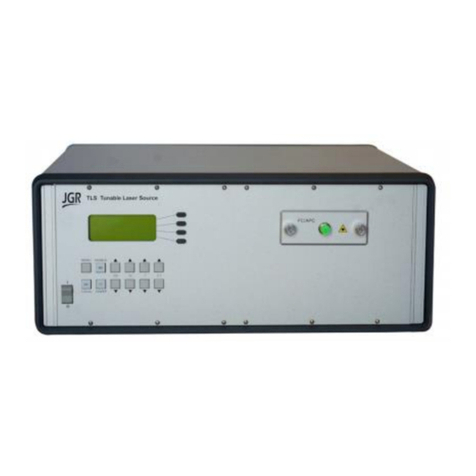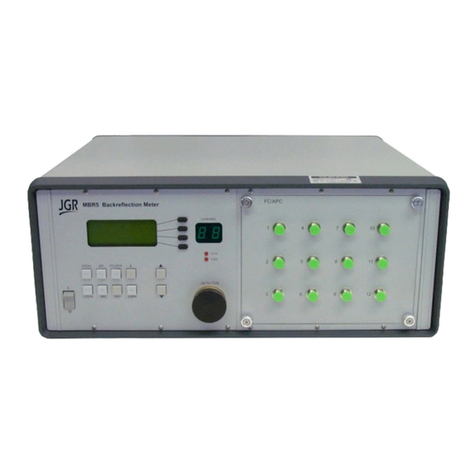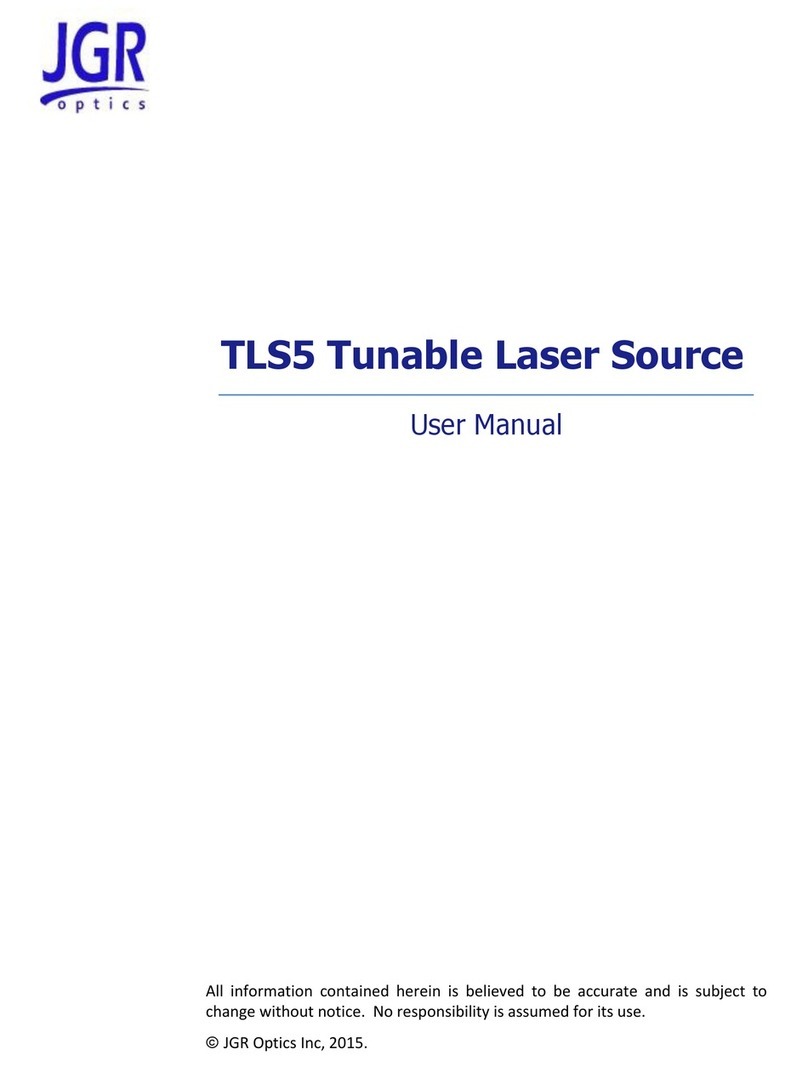RL1 User Manual
v
M-RL1-001-01
LIST OF FIGURES AND TABLES
Figure 1: RL1 Automated Return Loss Meter................................................................................................ 2
Figure 2: Front view of a dual output RL1..................................................................................................... 8
Figure 3: Rear view of an RL1........................................................................................................................ 9
Figure 4: Front view of an RD-S with an SD01 slide FC detector adapter................................................... 10
Figure 5: Rear view of an RD-S.................................................................................................................... 10
Figure 6: RL1 Detectors page ...................................................................................................................... 11
Figure 7: RL1 Setup page.............................................................................................................................12
Figure 8: RL1 Test Plan Information page ...................................................................................................14
Figure 9: RL1 Reference page...................................................................................................................... 14
Figure 10: RL1 Measure page...................................................................................................................... 15
Figure 11: Sample trace showing RL and RLTOTAL .........................................................................................17
Figure 12: RL1 with SX1 –Setup page.........................................................................................................17
Figure 13: RL1 with SX1 –Measure page.................................................................................................... 18
Figure 14: RL1 with SX1 –Reference page .................................................................................................. 18
Figure 15: RL1 webpage –Dashboard tab ..................................................................................................19
Figure 16: RL1 webpage –Input Strings tab ............................................................................................... 20
Figure 17: RL1 webpage –Network Settings tab ........................................................................................21
Figure 18: RL1 webpage –Upgrade tab......................................................................................................22
Figure 19: RL1 webpage –Help tab ............................................................................................................23
Figure 20: RL1 webpage –About tab ..........................................................................................................24
Figure 21: Accessing the RL1 self-calibration tab of the webpage .............................................................26
Figure 22: Viewing the calibration reports stored on the RL1.................................................................... 27
Figure 23: Example of good test jumper fiber management......................................................................29
Figure 24: Dirty connector end-face inspection using JGR's CS400K.......................................................... 36
Figure 25: Clean connector end-face inspection using JGR's CS400K......................................................... 36
Figure 26: Exposed view of good output fiber management .....................................................................36
Figure 27: Exposed view of poor output fiber management...................................................................... 36
Table 1: Safety symbols................................................................................................................................. 4
Table 2: Environmental requirements .......................................................................................................... 8
Table 3: Detailed description of the RL1 rear panel components (see Figure 3) ......................................... 9
Table 4: Detailed description of the RD-S rear panel components (see Figure 5)......................................10
Table 5: Detailed description of the RL1 Detectors page (see Figure 6)..................................................... 12
Table 6: Detailed description of the RL1 Setup page (see Figure 7) ...........................................................13
Table 7: Detailed description of the RL1 Reference page (see Figure 9) ....................................................15
Table 8: Detailed description of the RL1 Measure page (see Figure 10) .................................................... 15
Table 9: Description of HID input string SCPI commands ........................................................................... 20
Table 10: Troubleshooting failed steps during self-calibration .................................................................. 28
Table 11: Standard SCPI required commands list....................................................................................... 32
Table 12: RL1 commands list ......................................................................................................................33
Table 13: RL1 optical and electrical specifications sheet............................................................................ 39


































